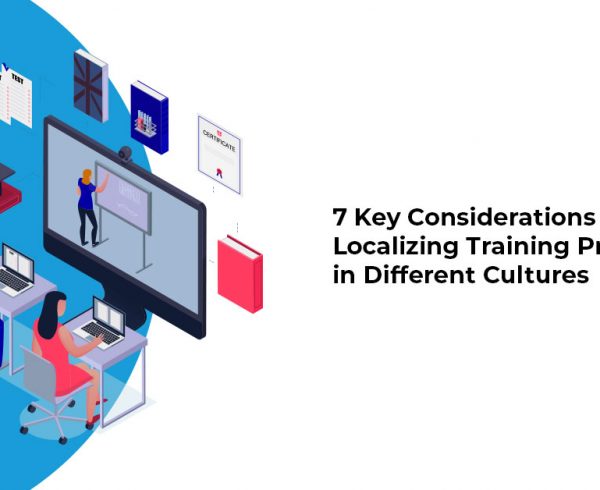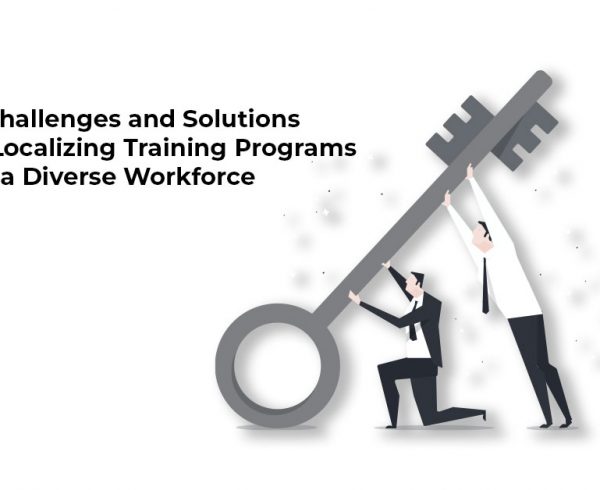Summary
This article explores nine ways corporate training localization can help drive revenue growth for your organization. It goes beyond simple translation to consider the unique needs and preferences of learners in each market. Localization services companies can help organizations adapt training content, materials, and delivery methods to suit different market preferences.
Corporate training is a critical component of any organization’s growth and success. As companies expand their operations globally, effective training programs catering to localized audiences become increasingly important. This is where corporate training localization comes into play.
By adapting training content to the specific cultural, linguistic, and regional requirements of different markets, organizations can enhance their training effectiveness, improve learner engagement, and ultimately boost revenue. This article will explore nine ways corporate training localization can contribute to revenue growth and help organizations expand their global reach.
Table of Contents:
- What Does Corporate Training Localization Involve?
- How Corporate Training Localization Can Boost Revenue?
- Conclusion
What Does Corporate Training Localization Involve?
Corporate training localization involves adapting training content, materials, and delivery methods to suit different target markets’ cultural, linguistic, and regional preferences. It goes beyond simple translation and considers the unique needs and expectations of learners in each market.
Organizations can create a more personalized and engaging learning experience by localizing training programs via localization services companies, leading to better knowledge retention and improved performance.
How Corporate Training Localization Can Boost Revenue?
Here are nine ways corporate training localization can benefit your business.
1. Personalize Training Content
One of the key benefits of workforce localization is the ability to personalize training content for different audiences. By understanding the cultural nuances and preferences of learners in a particular market, organizations can tailor their training materials to resonate with the local workforce.
This includes adapting language, examples, case studies, and scenarios to make them more relevant and relatable to learners. Personalized training content helps create a stronger connection between learners and the training material, resulting in better engagement and improved learning outcomes.
2. Adapt to Local Workforce Needs
Localization in corporate training also involves adapting training programs to address the specific needs and challenges of the local workforce. Different markets have unique regulatory requirements, compliance standards, and industry practices. Organizations can ensure learners receive the most relevant and up-to-date information by incorporating these elements into the training curriculum. This helps learners acquire the necessary skills and knowledge and demonstrates the organization’s commitment to meeting local workforce needs.
Also Read: 8 Challenges and Solutions in Localizing Training Programs for a Diverse Workforce
3. Improve Learner Engagement
When training materials are localized and customized to suit learners’ preferences, it significantly improves learner engagement. Learners are more likely to be motivated and actively participate in training programs tailored to their specific needs.
Localization helps create a learning environment that is familiar and comfortable for learners, making them more receptive to new information and concepts. This increased engagement leads to higher knowledge retention and the application of skills in real-world scenarios.
4. Enhance Training Effectiveness
The effectiveness of corporate training programs is directly linked to their ability to deliver the desired learning outcomes. Organizations can use translation and localization services to ensure the material is relevant, meaningful, and applicable to the local context. This improves the transfer of knowledge and skills from the training environment to the workplace.
Learners are more likely to apply what they have learned when they can see the direct relevance and practicality of the training content. As a result, organizations can achieve higher training effectiveness and drive better business outcomes.
5. Boost Brand Image and Reputation
Localization in business is not limited to product or service offerings. It extends to all aspects of the organization, including training programs. When organizations invest in corporate training localization, it demonstrates their commitment to understanding and meeting the unique needs of different markets.
This commitment enhances the organization’s brand image and reputation, positioning it as a global player that values diversity and inclusivity. A positive brand image helps attract top talent, build customer trust, and gain a competitive edge in the market.
6. Increase Market Penetration
Organizations can increase their market penetration in different regions by localizing corporate training programs. Training materials tailored to suit the local audience are more likely to resonate with learners and generate interest in the organization’s offerings. This can lead to increased demand for training programs, driving revenue growth. Additionally, localized training materials can help organizations establish themselves as industry leaders in specific markets, further expanding their market share and influence.
7. Expand Into New Markets
Corporate training localization opens doors to new markets and opportunities for organizations. When training materials are adapted to suit the preferences and requirements of different regions, organizations can effectively enter new markets with confidence.
Localized training programs help bridge the cultural and language barriers, making it easier for organizations to establish a presence and gain acceptance in new markets. Expanding into new markets can significantly contribute to revenue growth and long-term business success.
8. Improve ROI and Cost Efficiency
Investing in corporate training localization can improve return on investment (ROI) and cost efficiency. By adapting existing training programs for different markets, organizations can leverage their existing content and resources, reducing the need to create new training materials from scratch.
This cost-effective approach allows organizations to reach a wider audience without significant additional investment. Furthermore, by delivering training programs that are more relevant and effective, organizations can achieve higher ROI by ensuring that learners acquire the necessary skills and knowledge to drive business success.
9. Foster Cross-Cultural Collaboration
Corporate training localization not only enhances revenue growth but also fosters cross-cultural collaboration within the organization. Adapting training materials to local contexts promotes understanding and appreciation for diverse perspectives and practices. This approach encourages employees from different regions to collaborate more effectively, share insights, and work cohesively on global projects.
By promoting cross-cultural collaboration, organizations can tap into the collective strengths of their diverse workforce, leading to innovation and improved business outcomes.
Also Read: 8 Tried-and-Tested Tips for eLearning Content Localization
Conclusion
Corporate training localization offers numerous benefits to organizations seeking to expand their global reach and boost revenue. Organizations can achieve their training goals and drive better business outcomes by personalizing training content and adapting to local workforce needs. In addition, corporate training localization helps organizations improve their brand image and reputation, expand into new markets, and achieve cost efficiency.
Ready to take your corporate training to the next level with localization? Contact Hurix Digital today to learn more about their comprehensive localization services and how they can help boost revenue and expand your global reach.











